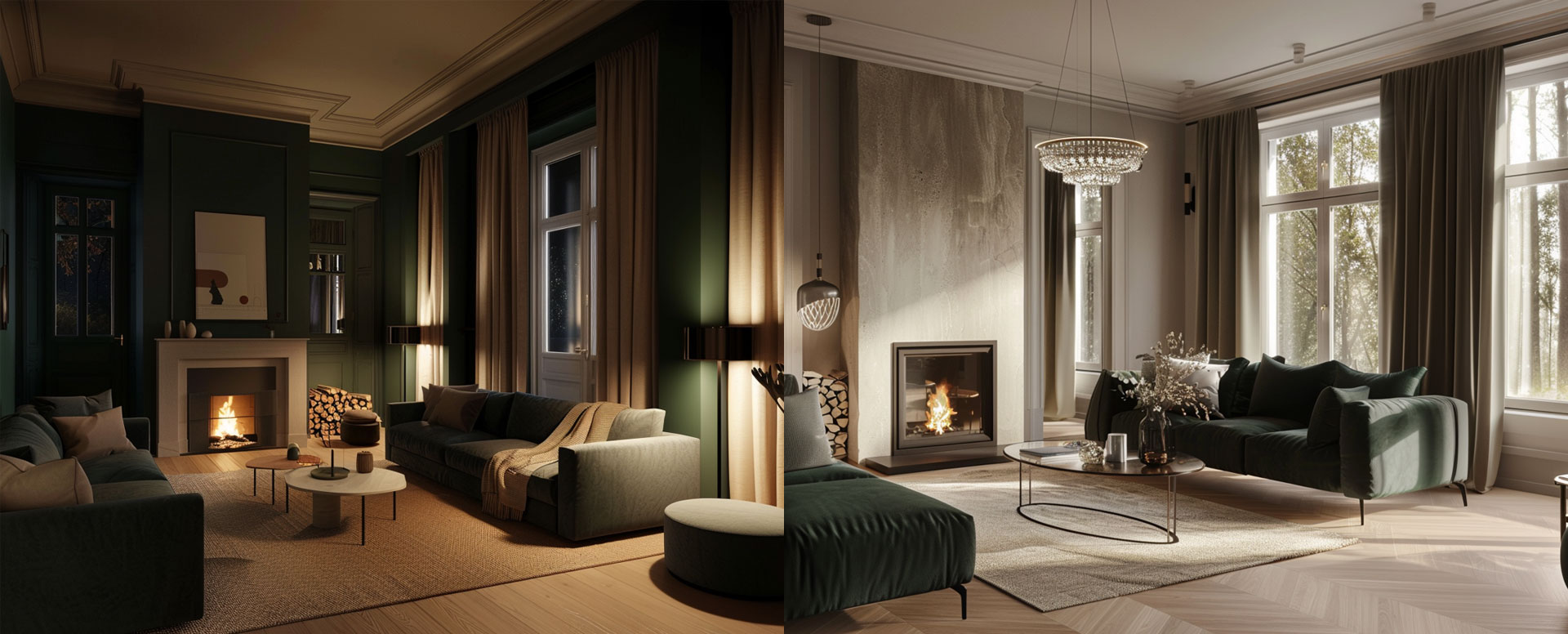The Importance of Lighting in Interior Design
Enlightening Your Space
In the realm of interior design, lighting isn’t just about the aesthetics of fixtures—it’s about how they function within a space, shaping its ambiance and functionality. Lighting plays a pivotal role in creating atmosphere, highlighting architectural features, and enhancing the overall experience of a room. Let’s delve into the different aspects of lighting and why they matter beyond mere appearance.

Understanding Different Types of Lighting
- General Lighting: Often provided by ceiling lamps, general lighting spreads ambient light evenly throughout a room, ensuring adequate illumination for various activities and tasks.
- Task Lighting: This type of lighting is more focused and directed, typically found in the form of lamps positioned over workspaces, counters, or by sofas where specific tasks require enhanced visibility.


- Spot Lighting: Spotlights are precisely directed beams of light that accentuate particular objects, artworks, or architectural features, drawing attention to focal points within a space.
- Decorative Lighting: Dimmable mood-affecting lights, such as decorative pendants or chandeliers, serve not only as sources of illumination but also as statement pieces that contribute to the overall aesthetic of a room.
Understanding Light Quality
-
Direct Light: Light that travels straight from the source to the surface, creating sharp shadows and distinct contrasts. It’s ideal for task-oriented areas where precise visibility is essential.
-
Diffused Light: Softened and scattered light that bounces off surfaces, reducing glare and harsh shadows. Diffused light is suitable for creating a gentle and inviting atmosphere in living spaces.
-
Indirect Light: Light that is reflected off surfaces or walls, creating a subtle, ambient glow that illuminates the entire room evenly. It helps to minimize glare and provides a comfortable, indirect illumination.
Factors Influencing Lighting Design
-
Positioning and Placement: Strategic placement of light fixtures can highlight architectural elements, artworks, or specific areas within a room.
- Height and Spacing: Consider the height at which fixtures are installed and their spacing to ensure uniform illumination and visual balance throughout the space.
- Color Temperature: The color temperature of light affects the mood and ambiance of a room. Warm tones create a cozy atmosphere, while cooler tones evoke a sense of freshness and vibrancy.
- Natural Lighting: Harnessing natural light through windows, skylights, or light wells can reduce the reliance on artificial lighting and create a connection with the outdoors.
- Focus Points: Lighting can draw attention to focal points within a room, such as a fireplace, artwork, or statement furniture, enhancing their prominence and visual impact.
-
Mood Enhancement: Tailoring lighting design to the desired mood or atmosphere—whether it’s cozy and intimate, bright and energetic, or calm and relaxing—can transform the overall feel of a space.
In conclusion, lighting in interior design goes beyond mere aesthetics; it’s a fundamental aspect that influences how we perceive and interact with our surroundings. By understanding the different types of lighting, light quality, and factors influencing lighting design, we can create spaces that are not only visually stunning but also functional, comfortable, and conducive to our well-being. So, let there be light—and let it illuminate your space in all its brilliance.
Want to learn more about the basics of how to decorate your home? Start with the fundamnetals, color theory and textures.
